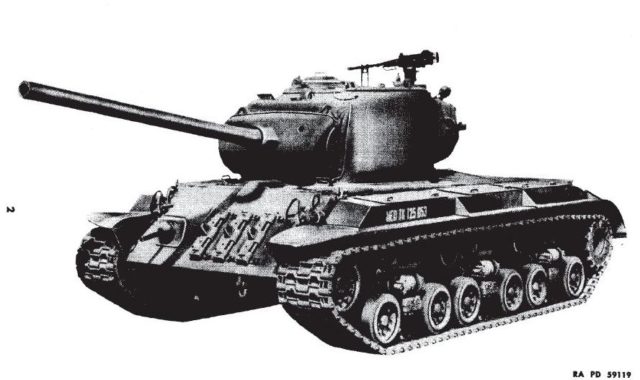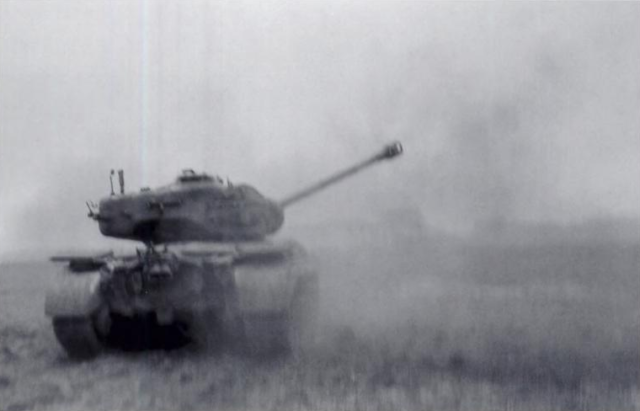As the Second World War was coming to its end, the technologies on the battlefields of Europe were becoming more and more complex. The tank industry especially saw an incredible development, as the pre-war models seemed like medieval war machines opposed to the sophisticated armored beasts introduced in 1944 and 1945.
One of the late-war tanks that tasted first blood on the battlefields of western Europe was the M26 Pershing. Named after the famous American general, John J. Pershing, who led the American Expeditionary Force in Europe in World War I, this was the first US-produced heavy tank.

But only a small number of Pershing tanks participated in combat in Europe, as the Pershing only entered service in 1944. The reason why this model’s production was delayed was partly due to the US doctrine to use tank destroyers rather than heavy tanks. This strategy was strongly advocated by some members of the general staff of the US Army.
Another reason for the late introduction of an American heavy tank was the mass production of M4 Shermans which flooded the front in Europe. These were considered capable of overcoming the German tanks with numerical superiority alone.
The M26 was, in fact, a final product of a series of prototypes developed as early as 1942. The final version was equipped with a 90 mm gun, with its secondary armament being a two Browning .30 cal and one .50 cal. machine gun. Its armor was 102 mm thick at its upper hull, with 76 mm on the lower hull. The hull sides varied from 50 to 75 mm.

The Pershing’s most notable appearances in combat in Europe include the Battle of the Bulge and the Battle of Remagen, which resulted in the unexpected capture of the Ludendorff Bridge over the Rhine.
As the US Army faced an armada consisted of 400 Panther and Tiger II tanks, it became apparent that the Shermans and tank destroyers were no matches to a force of state-of-the-art German Panzers with veteran crews that combined firepower, mobility, and speed to dominate the battlegrounds.
With the Pershing, the Americans could finally match the German armored vehicles which proved technologically superior in prior battles. Soon the Pershing proved its worth, as it was able to knock out Panthers and Tigers alike. One such encounter, in which an M26 destroyed a Panther while moving, was documented by Tec. Sgt. Jim Bates.
After WWII, the M26 Pershing used in Korea against the North Korean T-34-85 tanks with limited success. Even though the Pershing proved to be superior to the Soviet-made T-34, the Korean Peninsula was difficult terrain to stage large-scale tank battles, and all tank encounters were small skirmishes.
Nevertheless, the M26 tanks delivered to the UN forces in Korea participated in 32 % of all tank-to-tank skirmishes, with a significant number of kills. The tank was retired from the service in 1951 and replaced by the M46 Patton.